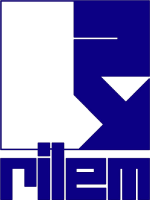Technical Committee
General Information
Deputy Chair: Dr. Aslam KUNHI MOHAMED
Subject matter
Molecular scale modeling has been widely adopted in the past two decades for studying cementitious materials, producing fruitful knowledge of fundamental physio-chemical processes. Nevertheless, the modeling approaches from different research groups remain largely varied, to the extent that algorithms with unreasonable atomic structures, force fields (FF), boundary conditions or sampling methods are still often reported. There is a need to review and recommend a baseline for molecular modeling work in cementitious systems. Given the rapid increase in the digitalization of technology and science, alongside the growing reliance on data-driven approaches that demand standardized databases, it is essential to address the current fragmentation in molecular modeling work within cementitious systems and establish a reliable baseline.
This TC aims to comprehensively review the atomic structures and force fields used in the modeling of cementitious materials, review and recommend the tools and algorithms for different modeling purposes, and to benchmark the modeling results with experimental data. We will limit our focus to minerals, solutions, surfaces and chemicals that are most common in modern cementitious systems, such as clinker minerals, cement-water suspensions, and hardened cement pastes. We may extend our activities to include other materials of interest for RILEM . Our effort is divided into the following five working groups (WG).
WG 1) Atomic structures and force fields
- Review and gather structures for phases with compositional and structural variability such as C-(A)-S-H with alkali, ASR products, M-(A)-S-H, AF-phases with substitutions
- Review and gather bulk and surface structures of cementitious phases including chemical admixtures.
- Provide a curated database
- Review, select and gather experimental data relevant for structural validation
- Review and identify phases needing to be further explored (for example, Mg and Fe-rich phases)
- Review existing and new force fields (FF), including machine-learning FF and FF for organic molecules in cement suspension
WG 2) Chemical transformations
- Summarize emerging work on dissolution, precipitation and growth in cementitious systems.
- Discuss new strategies at molecular modeling (e.g. temperature accelerated dynamics, meta-dynamics) and mesoscales modeling (e.g. KMC)
- Review free energy methods for solution chemistry including solubility, activity etc.
WG 3) Interfacial processes, confined fluids, mass transport, sorption-induced deformations
- Review modeling of adsorption processes, ion correlations, ion and mass transport behaviour in hydration products.
- Review modeling of hydration states of phases with molecular water (e.g. C-S-H, AFm, AFt, ASR) and stability under RH and T change, hysteresis and cavitation in nanopores, surface tension, disjoining pressures, sorption induced swelling and shrinkage.
- Compare the simulation results with experimental data
- Recommend simulation methodologies
WG 4) Mechanical, thermal, and electromagnetic properties
- Review modeling of the elastic constants, creep, relaxation, fracture processes, role of interfaces
- Review calculations of heat capacity, thermal expansion and thermal conductivity
- Review calculations of ionic conductivity, dielectric permittivity
- Compare modeling results with experimental data; complete table of basic properties (including missing data needed for thermodynamic modeling and multiscale modeling)
- Recommend simulation methodologies
WG 5) Mesoscale modeling
- Review modeling work on effective interactions identified at the molecular scales (PMFs, particle shapes, flexibility, etc)
- Review coarse-grained simulations
- Review structural features and chemo-physico-mechanical properties assessment at mesoscale
- Compare simulation results with experimental data
The deliverables of this TC mainly include Topical Collection in Materials and Structures related to WG activities, open-access database of structures and tools, tutorial documents for recommended modeling methodologies.
Terms of reference
- The TC is proposed to launch in 2025, with a projected five-year timeline.
- Key objectives will be achieved by engaging a diverse membership of academic and government research entities (research centers and national laboratories), located primarily in Europe (Austria, Belgium, France, Italy, Spain, Switzerland...), America (USA, Canada, Brazil …) and Asia (China, India, Japan, Singapore)
- The committee will focus on bibliographical research, database construction, and benchmarking comprised in the activities of specific WG. Deliverables will include comprehensive review articles and an open-access database, ultimately fostering a more cohesive modeling community and improving consistency across molecular simulations in cement-based systems. In conjunction with the organization of conferences, educational activities—such as tutorials on generating structures, surfaces, and computing properties—can be envisioned.
- Participation from industry and practitioners will be encouraged, providing opportunities for new RILEM members from both academia and industry sectors.
- Participation from industry and practitioners will be actively encouraged by leveraging existing links with cement producers, producers of additives and admixtures. These connections will be invited to be involved in TC meetings, encourage their membership in the TC, and explore opportunities for implementing and testing recommended techniques in their activities. TC activity will support fundamental research and deliver insights for applied research, offering direct relevance to industrial stakeholders by elucidating fundamental phenomena, corroborating experimental data and testing hypotheses in complex cement systems.
Detailed working programme
The TC will operate through online and hybrid meetings twice per year with the entire TC, synchronized preferentially with RILEM events and the (biennial) International Conference on Atomistic Simulation of Cementitious Materials (ICASCM).
Detailed working programme:
Year 1: Foundation and Initial Tasks
- Organize Working Groups (WGs), define objectives, and assign tasks within each group.
- Start work on State-of-the-Art Reviews (STARs) by each WG, identifying specific areas of focus.
- Define benchmarking cases for relevant force fields and modeling
- Begin structuring the open-access database for phase structures, properties, and force fields.
- Publish the first letter in RILEM Technical Letters, detailing the research needs, and TC rationale.
Year 2: Database and STARs Development
- Continue STARs development, including preliminary findings and WG-specific STAR drafts.
- Expand the database with initial data entries for phase structures and properties.
- Begin benchmarking key force fields in alignment with defined scenarios.
- Finalize preliminary recommendations for simulation protocols (WG1, WG3, WG4).
Year 3: Refinement and Documentation
- Finalize STARs and compile them for potential publication as a topical collection in a RILEM journal.
- Further database population with verified phase structures, properties, and force fields; finalize database structure and functionality.
- Document initial recommendations for simulation protocols, covering methods for harmonization across WGs.
- Organize the first Advanced School on Atomistic Simulation Techniques for cementitious materials.
Year 4: Educational Materials and Benchmarking Completion
- Refine benchmark data and document outcomes, ensuring reproducibility and transparency.
- Develop educational materials, including tutorials and courses, on established simulation protocols and emerging techniques.
Year 5: Finalization and Reporting
- Complete documentation of database, benchmarks, and recommendations, making resources fully accessible and functional.
- Host final Advanced School to share outcomes and ensure the dissemination of knowledge within the TC community.
- Prepare and publish the final letter in RILEM Technical Letters, summarizing achievements, open questions, and future directions.
- Conclude with a final report summarizing all TC deliverables, including the STARs, educational resources, and open-access database.
Technical environment
Expected achievements
Group of users
Specific use of the results





